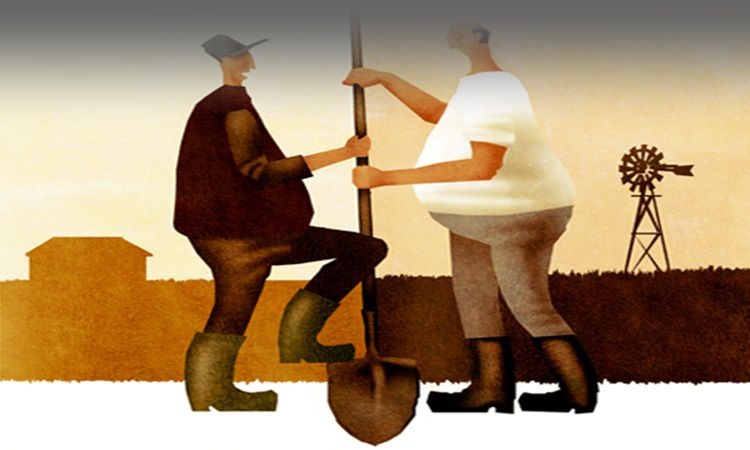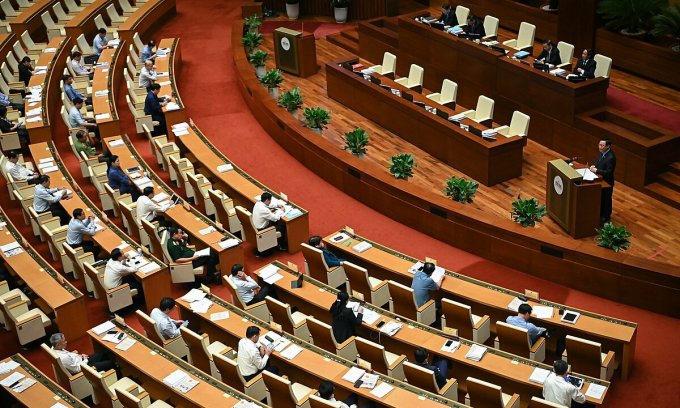How to deal with encroached land in Vietnam?

Today, the land market is becoming more important than ever. Everyone wants to have their own piece of land. So about the matter “How to deal with encroached land in Vietnam?” let’s find with LSX in the article below
Legal grounds
- Land Law 2013
- Civil Code 2015
- Circular 25/2014/TT-BTNMT
What is the boundary of a land plot?
The boundary of a land plot is a curving line created by the adjacent plot edges, enclosing the area belonging to that land parcel (specified in Item d, Point 2.3, Clause 2, Article 8 of Circular 25/2014/TT-BTNMT).
Regulations about land user rights
Pursuant to Article 166 of the 2013 Land Law, general rights of land users are as follows:
Article 166. General rights of land users
1. To be granted a certificate of land use rights and ownership of houses and other land-attached assets.
2. Enjoy the fruits of labor and investment results on land.
3. To enjoy benefits from State works in service of the protection and improvement of agricultural land.
4. To be guided and assisted by the State in the reclamation and reclamation of agricultural land.
5. To be protected by the State when other people infringe upon their lawful rights and interests in land.
6. To be compensated when the State recovers land according to the provisions of this Law.
7. Complaints, denunciations and lawsuits about violations of their lawful land use rights and other violations of the land law.
What is the purpose of defining land boundaries?
Making a red book: also known as a certificate of land use right containing all information about the land, including the area and boundaries of the land plot.
Avoiding disputes: In fact, disputes between two adjacent plots of land occur frequently in Vietnam. Therefore, defining boundaries will help resolve disputes. In accordance with Vietnamese law.
Dispute settlement: If a dispute occurs on two or more adjacent plots of land in the absence of clearly defined boundaries. The re-measurement of the area is said to be the solution to resolve the dispute.
Principles of determining the boundaries of land plot
According to the provisions of Article 175 of the Civil Code 2015 (Civil Code 2015), land boundaries are determined by agreement or by decision of a competent state agency. Land boundaries can also be determined by custom or by boundaries that have existed for 30 years or more without dispute.
+ Not to encroach on, plant boundary markers to separate, not to change, even if the boundary is canals, ditches, trenches, ditches, field banks. All subjects have the obligation to respect and maintain common boundaries.
+ Land users are allowed to use space and the ground vertically from the boundary of the land plot in accordance with the provisions of law and must not affect the use of other people’s land.
+ Land users are only allowed to plant trees and do other things within the land area under their land use rights and according to defined boundaries; if the tree’s roots or branches exceed the boundary, they must trim the roots, cut or prune the excess, unless otherwise agreed.
According to Article 176 of the 2015 Civil Code, the boundary markers separating real estates are determined by the following method:
+ Real estate owners may only erect landmarks, fences, trees, and walls on the land under their ownership;
+ Adjacent property owners may agree to erect landmarks, fences, trees, and walls on the boundary to serve as a boundary between the properties (and landmarks), this will become jointly owned by the owners of the adjoining immovable property);
+ If the boundary marker is created by only one party on the boundary and is agreed by the owner of the adjoining immovable property, the boundary marker is jointly owned and if the owner of the adjoining immovable property does not agree with justifiable reasons, the boundary marker maker must remove it.
How to deal with encroached land in Vietnam?
In this case, you have the right to initiate a request to the Court to settle the dispute to reclaim the land in accordance with the law on the rights of land users.
According to Article 12 of the 2013 Land Law, prohibited acts are as follows:
Article 12. Prohibited acts
“1. Encroachment, occupation, destruction of land.
Article 175 of the 2015 Civil Code stipulates the boundaries between real estate:
“1. The boundary between adjacent properties is determined by agreement or by decision of a competent state agency.
Boundaries may also be determined by custom or by boundaries that have existed for 30 years or more without dispute.
Do not encroach on, occupy or change the boundary markers, even if the boundaries are canals, ditches, trenches, trenches or fields. All subjects have the obligation to respect and maintain common boundaries.
2. Land users may use space and the ground vertically from the boundary of the land plot in accordance with the provisions of law and must not affect the use of other people’s land.
Land users are only allowed to plant trees and do other things within the land area under their use rights and according to defined boundaries; if the tree roots or branches exceed the boundary, they must trim the roots, cut or prune the excess, unless otherwise agreed.”
Clause 11 Article 12 of the Law on Construction 2014 stipulates prohibited acts in construction activities as follows: “11. Using the works not in accordance with the purposes and functions of use; building expansion, encroaching on the area, encroaching on the space under lawful management and use of other organizations and individuals and of the public area and common use area”.
Article 6 of Circular 06/2012/TT – BNV stipulating the duties of civil servants of Cadastral – construction – urban and environment (for wards and towns) or civil servants of Cadastral – agriculture – construction and environment school (for commune):
“1. Advise and assist the Commune People’s Committee in organizing the performance of tasks and powers of the Commune People’s Committee in the following fields: Land, natural resources, environment, construction, urban, transport, agriculture and build new rural areas in the area according to the provisions of law.
2. Directly perform the following tasks:
a) Collect information, synthesize data, make books of documents and develop reports on land, administrative boundaries, natural resources, environment and biodiversity, planning, construction construction, urban, traffic, agriculture and new rural construction in the area according to the provisions of law;
b) Organize the mobilization of people to apply scientific and technical advances to production and environmental protection in the communes;
c) Technical supervision of construction works under the management competence of commune-level People’s Committees;
d) Assume the prime responsibility for, and coordinate with other civil servants in, performing administrative procedures in receiving dossiers and verifying them to confirm the origin, status of land registration and use, and the status of land disputes changes in land in the area; prepare documents and documents on land and the licensing of renovation and construction of works and houses in the area for the Chairman of the commune-level People’s Committee to decide or report to the superior-level People’s Committee to consider and decide according to the provisions of law.
3. Perform other tasks as prescribed by specialized laws and as assigned by the President of the People’s Committee of the same level.
According to the law, the land user is obliged to respect the boundaries between adjacent properties, including the use of the space above the land plot. Moreover, in the process of land use, the law forbids the owner from encroaching on the area, encroaching on the space under the lawful management and use of other individuals.
Therefore, the act of constructing works encroaching on adjacent land is against the provisions of law.
Services of LSX
Prestigious professional services: Firstly, the team of consultants and consultants for many years in the field of civil status, and customer support.
On-time: Certainly, with the motto “Get your lawyer right at your fingertips”, we ensure the service always performs on time. The rights and interests of customers always come first.
Cost: Besides, LSX’s service costs are highly competitive; depending on the nature of the particular case. So, we want our guests to have the best possible service experience. Therefore, costs which guaranteed to be the most suitable and economical for customers.
Confidentiality of client information: Finally, all brand information of client LSX will be 100% confidential.
Please contact us immediately if you have any questions about “How to deal with encroached land in Vietnam?”
Contact LSX
Finally, hope this article is useful for you to answer the question about “How to deal with encroached land in Vietnam?” If you need any further information, please contact LSX Law firm: at +84846175333 or Email: [email protected]
Please see more
- Can businesses be exempted from land rent when an investment project in Vietnam stops operating
- Land allocation, land lease and change of land use purpose in Vietnam
- Boundary of land plot according to Vietnam law
Frequently asked questions
– One is the Chairman of the commune-level People’s Committee who has the authority to settle disputes by way of conciliation at the grassroots.
– Secondly, the Presidents of the People’s Committees of the province and the district are competent in cases where the involved parties do not have land-related papers. However, the Chairman of the Provincial Committee has jurisdiction over disputes in which one party is an organization, a religious establishment, a Vietnamese residing abroad and a foreign-invested enterprise. Disputes between households, individuals and communities shall fall under the jurisdiction of district-level committee chairmen.
– Thirdly is the People’s Court if the litigant files a lawsuit.
– Disputing parties who are unable to conciliate by themselves shall send an application to the commune-level People’s Committee where the real estate is located for conciliation.
– Chairpersons of commune-level People’s Committees shall coordinate with commune-level Viet Nam Fatherland Front Committees, member organizations of the Front, and other social organizations to organize the conciliation of land disputes in their respective localities. The conciliation of this dispute shall be carried out within 45 days from the date of receipt of the request for settlement of the land dispute. The conciliation must be recorded in writing, signed by the parties and certified by the People’s Committee of the commune, with the confirmation of successful or unsuccessful conciliation, sent to the disputing parties, and kept at the People’s Committee of the commune. commune where the land is in dispute.
– In case of successful conciliation but there is a change in the status of boundaries, the commune-level People’s Committee shall send the minutes of conciliation to the Division of Natural Resources and Environment in case of land dispute between households and individuals. individuals and communities together. The Division of Natural Resources and Environment, the Department of Natural Resources and Environment, shall submit to the People’s Committee of the same level a decision on recognition of the change of land plot boundaries and granting a new certificate of land use rights and ownership of houses and other properties attached to the land.
In the first step, the parties can mediate land disputes by themselves through AGREEMENT, discussion on a voluntary basis, respecting each other’s interests. If conciliation cannot be reached, the involved parties have the right to apply to the Commune-level Committee to request settlement of the land dispute.
After receiving the application, the Commune-level Committee is responsible for verifying and verifying the cause and collecting relevant documents. After that, a Dispute Mediation Council must be established and a conciliation meeting with the participation of the parties and members of the Mediation Council must be held. Mediation can only be conducted when the disputing parties are present. If one of the disputing parties is absent for the second time, the conciliation is considered unsuccessful. Procedures for conciliation of land disputes at the commune-level committees shall be carried out within 45 days from the date of receipt of the application.
In the second step, if the dispute has been conciliated but failed, the involved parties have the right to apply to the district and provincial committees for settlement.
After that, the Chairman of the competent level committee assigns the responsibility of the advisory body to settle. This agency is responsible for verifying and verifying the case, organizing conciliation between the disputing parties, and organizing meetings of relevant departments and agencies to advise on land law to settle disputes (if necessary). and complete the dossier and submit it to the Chairman of the Committee at the same level.
Thirdly, in case the involved parties disagree with the settlement decision, they have the right to complain to the Chairman of the Provincial Committee if the Chairman of the District Committee settles it, or the Minister of Natural Resources and Environment if the Chairman of the Committee grants it. resolved province.
In the fourth step, in the process of dispute settlement right from the second step, the involved parties still have the right to initiate a lawsuit to the People’s Court for settlement according to regulations.
(Article 202, Article 203 of the 2013 Land Law and Section 4, Chapter 7 of Decree 43/2014/ND-CP as amended by Decree 01/2017/ND-CP)
Conclusion: So the above is How to deal with encroached land in Vietnam?. Hopefully with this article can help you in life, please always follow and read our good articles on the website: lsxlawfirm.com




